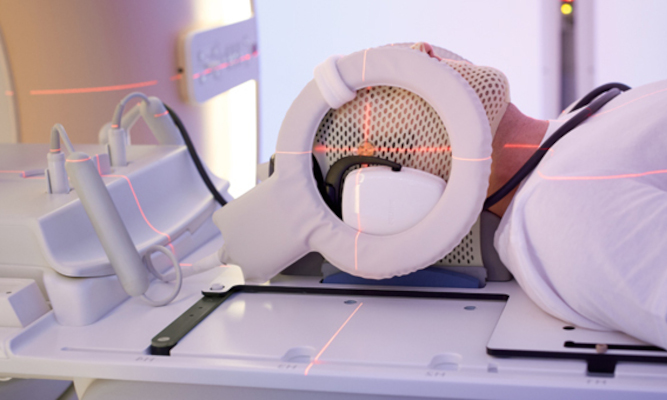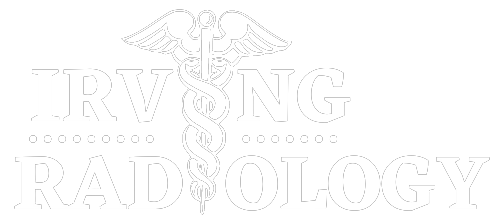“Does a smile can cure everything”, may or maybe. But trust me smiling is a good start, it is a game changer. Keeping a positive outlook makes you radiate positiveness, which can thus cure every gloomy situation. You all may be familiar with the fact. Personally, I have no first-hand encounter with this situation, but I have heard from a cancer survivor that what made him fight against this disease was ‘laughter or smile’. So this person is a public figure and he was labelled as a great comedian too. As a public figure, his words crossed over boundaries and people started acknowledging it.
So take this to your heart, and face these unpleasant situations with a smile, as it can boost your resilience.
Radiation therapy is a type of cancer treatment that uses beams of intense energy to kill cancer cells.

Around two years back, we were totally entrapped by a microscopic virus. This microscopic virus, which resembles a crown, dominated the entire globe and disturbed the entire system. It is said that the global pandemic had a terrible impact on cancer patients too. People that have already been diagnosed with cancer were primarily anxious to visit healthcare systems, also restrictions marked another reason.
The reason for the fear or anxiety is almost clear, as they are already facing a hidden pandemic, cancer, so an additional cause can devastate their situation. And thus the number of diagnoses and treatments has been delayed. As the pandemic subsides, the healthcare system re-prioritized its needs by ensuring excellent and fair access to cancer diagnosis, treatment and care.
The advent of technology accelerated the medical arena to make a great impact on cancer care. By enabling early cancer identification and enhancing the quality of life for all cancer patients, these new technologies and advancements in cancer treatment have the potential to completely change the way we approach the disease.
WHAT IS RADIATION THERAPY?
At some point throughout their course of treatment, more than half of cancer patients receive radiation therapy. And it is one of the most important tools in treating cancer.
In order to treat cancer, radiation therapy uses high-energy radiation. Radiation oncologists, or doctors who specialize in radiation therapy, choose the optimal doses for a given form of cancer in order to optimize its therapeutic effects while minimizing any damage to healthy tissues. What therapy is most appropriate for you and your particular type of cancer is recognized or determined by the radiation oncologist. Radiation therapy is a treatment option that a radiation oncologist may employ to treat cancer, lessen pain in cancer patients, or treat other cancer-related illnesses.

High-energy radiation is used in radiation therapy to harm cancer cells’ DNA and impair their capacity to proliferate and spread. Cells that are actively dividing are most efficiently destroyed by radiation. It can be administered through devices known as linear accelerators or through radioactive sources that are either temporarily or permanently inserted inside the patient. Radiation treatment may be used to treat cancer, lessen the pain experienced by cancer patients, or treat other side effects.
Radiation therapy uses precise energy beams to target malignant cells while protecting the surrounding healthy tissue to the greatest extent possible. Numerous forms of cancer can be treated with radiation therapy. Additionally, it can be used in conjunction with other cancer therapies including chemotherapy and/or surgery.
HOW DOES RADIATION THERAPY ACT AS A SHIELD AGAINST CANCER?
Radiation therapy has the ability to treat cancer, stop or decrease its growth, and prevent it from coming back. So it’s clear that radiation therapy holds multiple goals. Let’s check out what all these goals are-
Curing or shrinking early-stage cancer: Radiation can be particularly harmful to certain cancers. In these situations, radiation may be used alone to reduce or eradicate cancer. Chemotherapy or other anti-cancer medications may be administered initially in some circumstances. For some cancers, radiation therapy may be administered either before surgery to reduce the tumour (pre-operative therapy or neoadjuvant therapy) or after surgery to prevent cancer from recurring (called adjuvant therapy).
Radiation may be the recommended treatment for some cancers that can be cured either through surgery or radiation therapy. This is due to the fact that radiation may result in less harm and that the affected body part may function more normally after therapy. Radiation, chemotherapy, or other anti-cancer medications may be used in combination for specific cancer types.
By increasing the radiosensitivity of cancer cells, specific medications, also known as radiosensitizers, improve the effectiveness of radiation therapy. According to research, when anti-cancer medications and radiation are administered together for specific forms of cancer, they can enhance one another’s effectiveness beyond what would be possible if they were administered separately. One drawback, though, is that side effects are often worse when they are given together.
Prevent the spread of cancer to new locations: Cancer can spread to different body parts from the site of origin. Even when cancer cells cannot be seen on imaging scans like CT scans or MRIs, doctors frequently believe that a small number of cancer cells may have already spread. Radiation therapy is often used to treat the region where cancer tends to spread the fastest in order to eradicate any cancer cells there before they may develop into tumours.

Due to the fact that some types of lung cancer frequently travel to the brain, patients with these cancers may get radiation to the head even when no cancer is present. By doing this, cancer is less likely to spread to the head than it otherwise might. It is sometimes possible to provide radiation to treat existing cancer while also administering radiation to prevent the development of new cancer. This is particularly true if the potential site of cancer spread is close to the tumour.
To treat symptoms caused by advanced cancer: On occasion, cancer has spread too far to be treated. However, some of these tumours can still be treated to reduce their size, allowing the patient to feel better. Radiation may be able to ease the symptoms of advanced cancer, such as discomfort, difficulty breathing or swallowing, and bowel obstructions. It is referred to as palliative radiotherapy.
To treat recurring cancer: Radiation may be used to treat cancer or symptoms brought on by advanced cancer if a person’s cancer has recurred. The use of radiation following a recurrence relies on a variety of variables. It might not be possible to administer further radiation in the same location, for example, if cancer has returned to a body part that has already received radiation therapy. The amount of radiation that was previously used will determine this. Other times, radiation may be applied to the same region of the body or to a different region. Radiation may not be employed even if a tumour recurs since some tumours do not respond as well to it.
TYPES OF RADIATION THERAPY FOR CANCER PATIENTS
Now let’s delve into the two primary types of radiation therapy used to treat cancer – external beam radiation and internal radiation therapy.
The type of cancer, the size and location of the tumour, as well as the patient’s general condition, will all influence the kind of radiation a doctor would advise.
- External beam radiation therapy:
The most used type of radiation therapy for cancer is external beam radiation. External denotes that the energy beams are generated by a device that is not inside the body. The beams are expertly targeted by a medical practitioner and enter the body to precisely target the cancerous tissue. External beam radiation is also referred to as teletherapy.
External beam radiation therapy is a local treatment, meaning it only affects one part of your body. For example, if you have lung cancer, you will only receive radiation to your chest, not your entire body.
External beam radiation therapy is again diversified, which includes-
- Three-dimensional conformal radiation therapy (3D-CRT)
- Intensity-modulated radiation therapy (IMRT)
- Proton beam therapy
- Image-guided radiation therapy (IGRT)
- Stereotactic radiation therapy (SRT)
- Internal radiation therapy:
Internal radiation therapy also referred to as brachytherapy, is the second major radiation treatment modality. A radiation implant is inserted into or closes to the cancer location during this treatment.
The implants are available in many shapes, such as seeds, pellets, wire, tubes, and capsules.
Different types of Internal radiation therapy are-
- Permanent implants
- Temporary internal radiation therapy
Brachytherapy, like external beam radiation therapy, is a local treatment that only treats a specific part of your body.
The radiation source in your body will emit radiation for a period of time during brachytherapy.
Apart from these two, there is another type of radiation therapy, which is-
Systemic radiation therapy:
Another type of internal radiation therapy is systemic radiation therapy. A radioactive chemical that must be swallowed travels throughout the body to locate and eradicate the cancerous cells. An alternative is for a medical professional to inject the radioactive material directly into the patient’s vein.
What are the benefits of radiation therapy and how effective are they in treating cancer?
Radiation therapy (also known as radiotherapy) is an extremely effective cancer treatment with numerous applications. Radiation therapy cures cancer in many patients (alone or in combination with other treatments) and relieves symptoms or extends survival in patients with more advanced cancers. Radiation therapy may alleviate pain by preventing cancer cells from growing and decreasing inflammation in the area of your body where the cancer is located.
Radiation therapy is a precisely focused treatment that accurately controls cancer wherever it may exist in the body. This allows cancer cells to be killed or reduced in number while protecting the majority of the body’s other organs and tissues. Radiation therapy, whether delivered before or after surgery, is highly effective in reducing the risk of cancer recurrence in many common cancers, including breast cancer, bowel cancer, uterine cancer, skin cancer, and prostate cancer. In some cancers, such as prostate, head and neck, bladder, lung, cervix, and skin cancers, radiation therapy, with or without drug therapy, can be used as the primary curative treatment, avoiding the risks of surgery and organ removal.
Radiation therapy is responsible for 40% of all cancer cures worldwide and improves the quality of life for many others. In recent years, new technological advances in radiation therapy have made life easier for cancer patients by making treatments faster, more accurate, and more effective.
SIDE EFFECTS OF RADIATION THERAPY

Everyone reacts differently to radiation therapy. It’s best to assume that side effects are possible, even if you don’t experience all of them. The severity and number of side effects may be affected by the location and type of cancer, as well as your overall health. Any pre-existing conditions you had prior to be diagnosed with cancer may also influence how you respond to treatment.
Many patients experience fatigue that worsens over time, particularly if the treatment course lasts several weeks. Other common side effects, depending on the site treated, include skin redness and soreness, bowel upset, bladder symptoms, nausea, and sore mouth or throat. There are medications, creams, and other treatments available to help with many of these common side effects.
Some people experience few or no side effects, while others experience many and there are early and late effects of radiation therapy.
Early side effects occur during or immediately following treatment. These side effects are usually temporary, mild, and treatable. They usually go away after a few weeks of treatment. The most common initial side effects are fatigue and skin changes. When radiation treatment is administered to this area, other early side effects such as hair loss and mouth problems are common.
Late side effects can take months or even years to express. They can occur in any normal tissue in the body that has been exposed to radiation. The risk of late side effects is determined by the area treated as well as the radiation dose used. Careful treatment planning can help to avoid serious long-term side effects. It is always best to consult with your radiation oncologist about the possibility of long-term side effects.
Some side effects may impair your ability to perform certain tasks. What you can do will be determined by your mood. While receiving radiation therapy, some patients are able to work or engage in leisure activities. Others find that they need more rest than usual and are unable to accomplish as much. If you experience bothersome side effects that interfere with your daily activities or health, your doctor may discontinue your treatments, change the schedule, or change the type of treatment you receive. Inform your cancer care team of any side effects you experience so they can assist you.
Why should you consider radiation therapy for your cancer treatment?
Radiation therapy is used in the treatment of more than half of all cancer patients. Radiation therapy is used by doctors to treat nearly every type of cancer. If the radiation therapy is recommended by your cancer care team, it is because they think the advantages will outweigh any potential side effects. An essential part of cancer management, radiation therapy or radiotherapy is a very productive method for treating cancer and provides both palliative and survival advantages.
About 50% of all patients with locally advanced malignant tumours receive radiation therapy at some point during their illness, thanks to the ongoing advancements in technology throughout the years. The effectiveness of radiation therapy, which has been improved throughout time, has led to an increase in cancer survivorship, but preventing or minimizing late consequences is a serious public health concern. Additionally, the growing cancer survivor population has sparked interest in the quality of life for cancer survivors.
A future without cancer is possible thanks to emerging cancer technologies. Thankfully, the science underlying today’s cancer technology advancements keep becoming better and better. Within the next 20 years, what experts currently consider to be the standard of care will likely look very different.

SOME MOVIES RELATED TO CANCER
You might watch movies to get away from reality, or you might watch them see how other people deal with the same things you do. Nevertheless, it’s possible to get a lot of insight from seeing how other characters deal with cancer. When you or a loved one is ill, watching such films can bring you comfort. Here are some of our best recommendations for cancer-related movies.
IRREPLACEABLE YOU
Sam and Abbie have been closest friends since they were kids and are now planning a wedding. When Abbie receives a terminal cancer diagnosis, their lives are turned upside down. With the possibility of a cloudy timeline, Abbie starts looking for a new love to look after Sam. Along the journey, Abbie develops odd connections with three people who have the trait of focusing on living even while they are near death. Even though Abbie passes away at the end without reaching her full potential, she is able to accept her situation and the people she is leaving behind.
THE FAULT IN OUR STARS
Hazel Grace, who is seventeen years old, has lung cancer and must always travel with an oxygen tank. In spite of her objections, her mother Frannie pushes her to attend a cancer support group. On the contrary, they fall in love when Hazel meets Gus, an 18-year-old who had cancer and lost part of one leg, but who appears to have recovered.
Gus is introduced to Hazel’s favourite book, and she tells him that she fantasizes about talking to the book’s creator, Amsterdam-based Peter Van Houten, about how the story ends. Van Houten receives a message from Gus via his assistant and extends an invitation for them to come to Amsterdam. Frannie joins them on their trip to the Netherlands, where Hazel discovers that Peter Van Houten is not like they expected at all.
Njandukalude Nattil Oridavela
A short narrative. It is a family’s struggle with cancer. It focuses on how the family handles a situation like this. How to continue living your life after receiving such upsetting news is the subject of Njandukalude Nattil Oridavela. A look at what happens following receiving a cancer diagnosis is provided by the movie, which is about fortitude and support. This will undoubtedly resonate with you if you have survived.
50/50
It comes as a cruel surprise to Adam Lerner (Joseph Gordon-Levitt) to hear that he has cancerous tumours along his spine because he has always tried to take care of his health. Adam attempts to maintain his positive attitude despite his mother’s (Anjelica Huston) and buddy Kyle’s (Seth Rogen) negative reactions to his doctor’s prognosis of a 50/50 chance of survival. Adam begins visiting a therapist, but their relationship threatens to go beyond that of therapist and patient.
You May Also Like- Brain Scans Show That Life Flashes Before Death (pretty much like in the movies)

